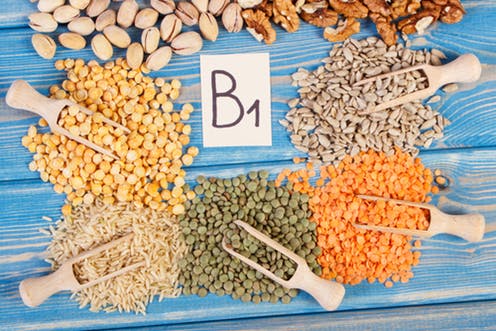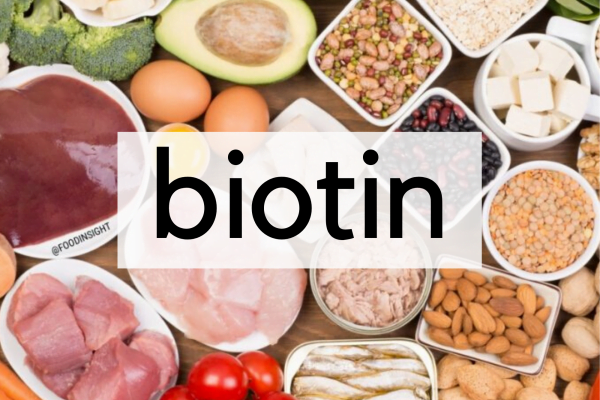Did you know that calcium is the most abundant mineral in your body? It’s extremely important for the healthy development of dense, strong bones. In fact, calcium makes up about 1.5-2% of our total body weight, just this one mineral! But this wonderful mineral doesn’t work alone. It relies on magnesium and vitamin D to be truly efficient.
Calcium and magnesium work in tandem together, which is why you’ll often see supplements labelled calcium-magnesium. When we first ingest any food containing calcium, magnesium actually makes this calcium more soluble and therefore more absorbable.
The two also work together in the muscular system! Think about the rhythm of your heart. Calcium is responsible for the contraction, while magnesium is responsible for the relaxation phase. Without these two in balance, it makes it harder for our heart and our other muscles to work efficiently. This is also why calcium-magnesium is often recommended for children experiencing painful growing pains (me, my whole childhood, this was me).
Calcium has also been proven to reduce menstrual cramps, leg cramps, irritability and other PMS symptoms in women. It can also help reduce leg cramps experienced during pregnancy. Unfortunately, calcium is often pulled from the bones during pregnancy, so this is a crucial time to be supplementing!
Should I be Supplementing with Calcium?
There are a ton of food sources for calcium, like milk, cheese, yogurt, chia seeds, beans, almonds and dark leafy greens. I’ve included a table below of the best sources for calcium per serving.
But let’s say you are getting your recommended daily intake of calcium. Is that enough? Not necessarily.
| Food source | Serving Size | Amount of calcium per serving (mg) |
| Parmesan cheese | 1 oz | 314.4 |
| 1% milk | 1 cup | 305 |
| Collard greens, boiled | 1 cup | 268 |
| Chia seeds | 2 tbsp | 178.9 |
| Poppy seeds | 1 tbsp | 126.5 |
| Spinach, cooked | ½ cup | 122 |
| Plain yogurt | 1 single serve | 110 |
| Kale, raw | 1 cup | 100.5 |
| White beans | 100g | 69 |
| Almonds | 23 almonds | 68 |
| Spinach, raw | 1 cup | 29.9 |
Now the next question is, how much should I be taking? The body requires different amounts of calcium depending on what stage in life we are at. Typically, babies aged 0-6 months require 300mg/day, ages 6-12 months need 500mg/day, children aged 1-10 years old need 600-800mg/day, 11-18 year old requires 800-1000mg/day, and adults 18 and older need about 1000-1500mg daily.
The other factor to consider is that our absorption rates decrease as we age. We absorb about 50-70% of all ingested calcium between infancy and childhood, but as adults, we may only absorb as much as 30-50%.
Absorption of Calcium
There are so many factors that affect the absorption of dietary calcium. The following are some scenarios when calcium absorption is INCREASED:
- During times of increased demand like during a growth spurt, pregnancy or lactation
- Adequate vitamin D intake
- In an acidic environment (stomach acid, vitamin C or ascorbic acid)
- Moderate protein intake, especially of the amino acids lysine and glycine
- Moderate fat intake
- Adequate exercise and activity level
- Ideal phosphorus balance
Absorption is typically increased when there is an increased demand by the body, for example, during a growth spurt, pregnancy or lactation. Calcium is also absorbed better in the presence of vitamin D and in an acidic environment like our stomach. That is why it’s crucial to have adequate hydrochloric acid (HCl) in the gut. Some signs of low HCl content include heartburn and indigestion – but more on that in another post.
This is why its best advised to take calcium either at bedtime or between meals when the stomach is empty and there is more HCl available.
Exercise also increases absorption of calcium. During exercise, our muscles and bones are put under stress. Our muscles produce microtears and need protein to grow bigger and stronger (all the gym gainz) and our bones require more calcium to become stronger and denser. This is why adequate calcium intake and exercise are often recommended to those at risk of developing osteoporosis.
Calcium absorption can be REDUCED by a number of aspects as well. I’ve summarized them in the list below:
- High fat intake
- High phosphorus intake
- High protein intake
- Low stomach acid
- Gastrointestinal illnesses like IBS, IBD, etc.
- Lack of exercise
- Foods high in oxalic acids
- Foods high in phytic acid
- Stress
- Vitamin D deficiency
Excessive fat, protein and phosphorus intake all inhibit calcium absorption. However, research shows that it may only be certain kinds of fat. Specifically, they found that long-chain fatty acids inhibited calcium absorption, while medium-chain fatty acids had no effect.
Gastrointestinal disorders, like IBS, IBD, celiac disease and Chron’s disease may also reduce absorption of calcium, so there may be an extra need for supplementation of calcium, magnesium, and vitamin D.
Foods high in oxalic acid, like spinach, rhubarb, cocoa powder and sweet potatoes also decrease absorption of calcium. This is because calcium binds to oxalic acid in your gut, therefore, inhibiting it from being absorbed. This is why a high oxalate diet may lead to kidney stones. Over time, the calcium-oxalate stones build up and get lodged in the kidneys. Phytic acid foods, like whole grains, have the same problem binding to calcium and inhibiting absorption. But they do not cause kidney stones.
But, (and this is a big but) this is NOT a reason to cut out spinach and sweet potatoes! In healthy individuals, these levels of oxalate can be passed through the kidneys normally. It’s when we start over supplementing, or eating too much of something, that problems arise. Remember, everything in moderation!

So Which Supplement do I Take?
There are three main forms of calcium supplements – calcium carbonate, calcium citrate and calcium magnesium.
Calcium carbonate is often the most common, as it has the highest amount of available calcium that can be absorbed. For example, let’s say a bottle of calcium at the pharmacy says it contains 1250mg of calcium carbonate. 40% of that is elemental calcium – the calcium your body absorbs. Calcium citrate has 21%, calcium gluconate has about 9% and calcium lactate has about 13% elemental calcium.
Now what about calcium magnesium?
Calcium magnesium is the best absorbed form of them all. It’s also beneficial because since these two minerals work in tandem together, you’re getting both for the price of one. Who doesn’t like a deal?
I must warn you to research a supplement brand before you buy! Many supplement companies get their calcium and magnesium from dolomite, a type of rock. However, dolomite is often contaminated with other heavy metals like lead. It’s imperative that you find a lead-free brand – or send me an email and I can recommend one for you!
The Conclusion
Calcium is such a crucial mineral to the human body. Without it, we risk bone density loss and osteoporosis. With that comes weakness and frequent bone breaks. Osteoporosis is a terrible disease that plagues so many elderly (and not so elderly) adults today.
I encourage you to take a look at your diet. Are you eating yogurt, dark leafy greens and almonds regularly? Are you exercising? Are you getting enough vitamin D? How about magnesium?
This can be a lot. Looking at the nutritional makeup of your diet can be very intimidating, and almost restrictive it seems. I don’t want you to start counting every milligram of micronutrient you ingest. It’s all about balance and the big picture. If osteoporosis is something that concerns you, or if there is any other health concern in general, please reach out to me! We can work on a micronutrient dense meal plan together to figure out if supplements are right for you. Remember, the best dietary guidelines for you are best for YOU. Each person’s body is unique, so let’s approach your health in the same way.
If you liked this post, don’t forget to subscribe to my newsletter and be sure to share it to all your friends!





Amazing for including the foods that have calcium! So much good info and so helpful when you broke down the serving size ☺️ You’re the best !
Thanks so much! Glad you like the article!